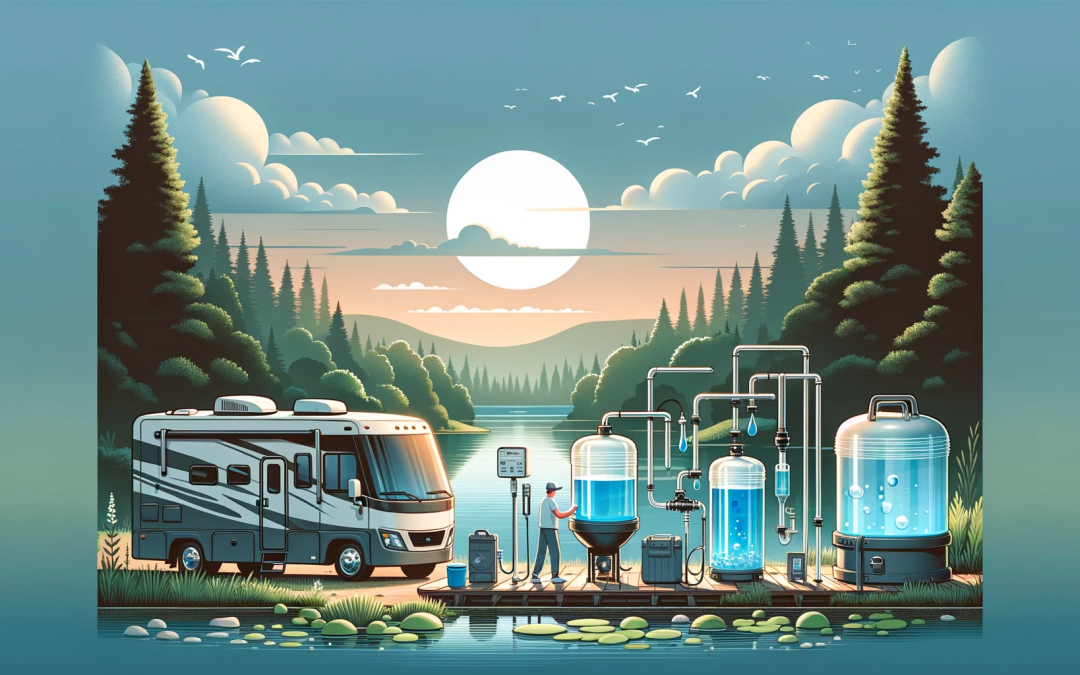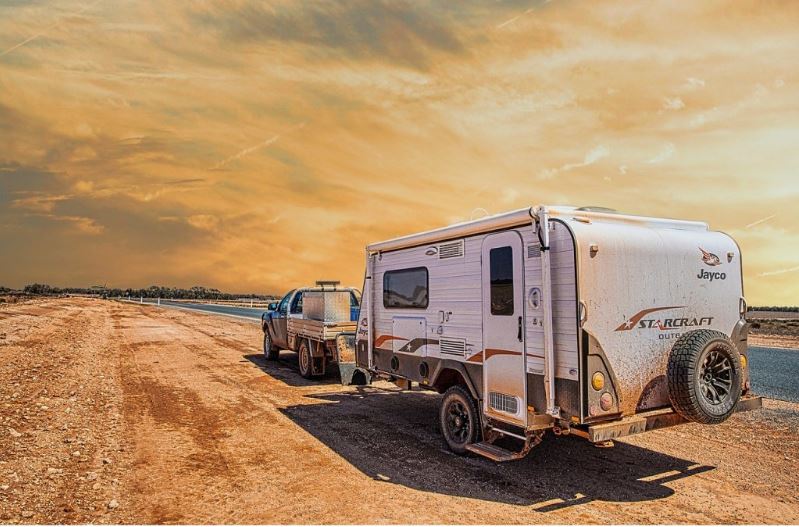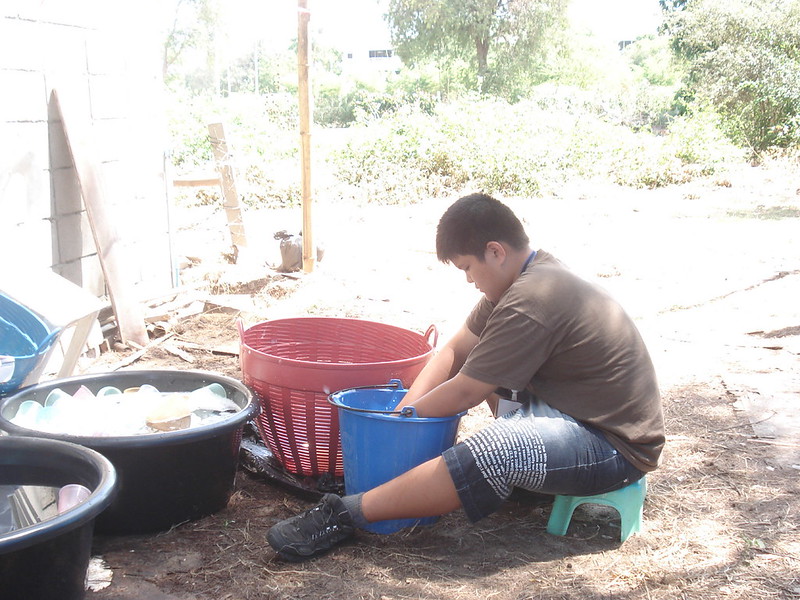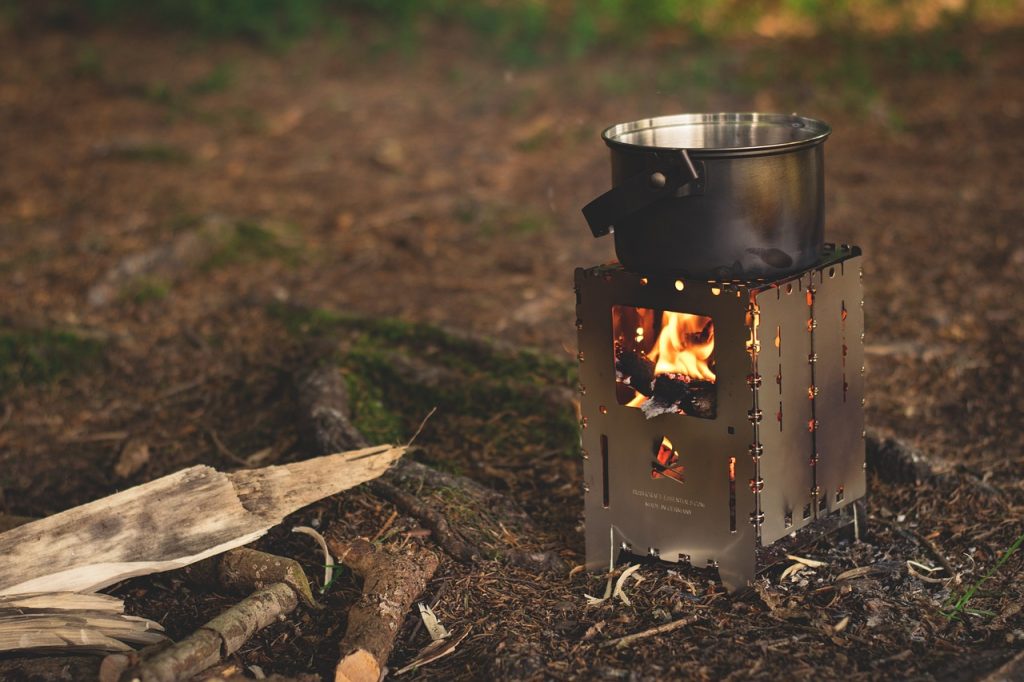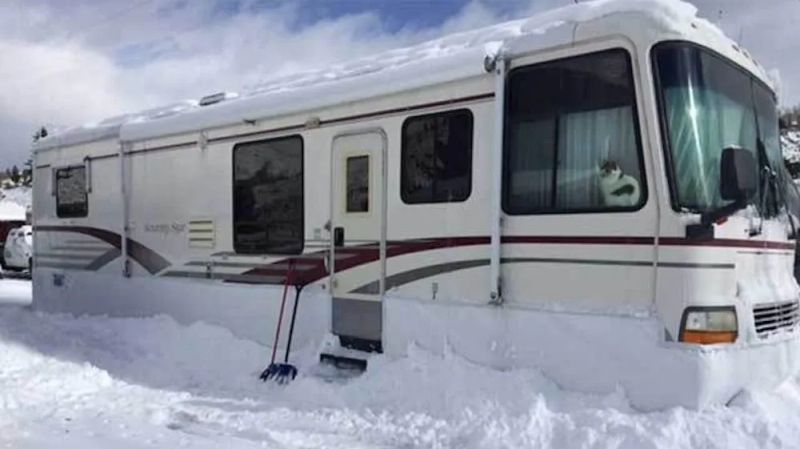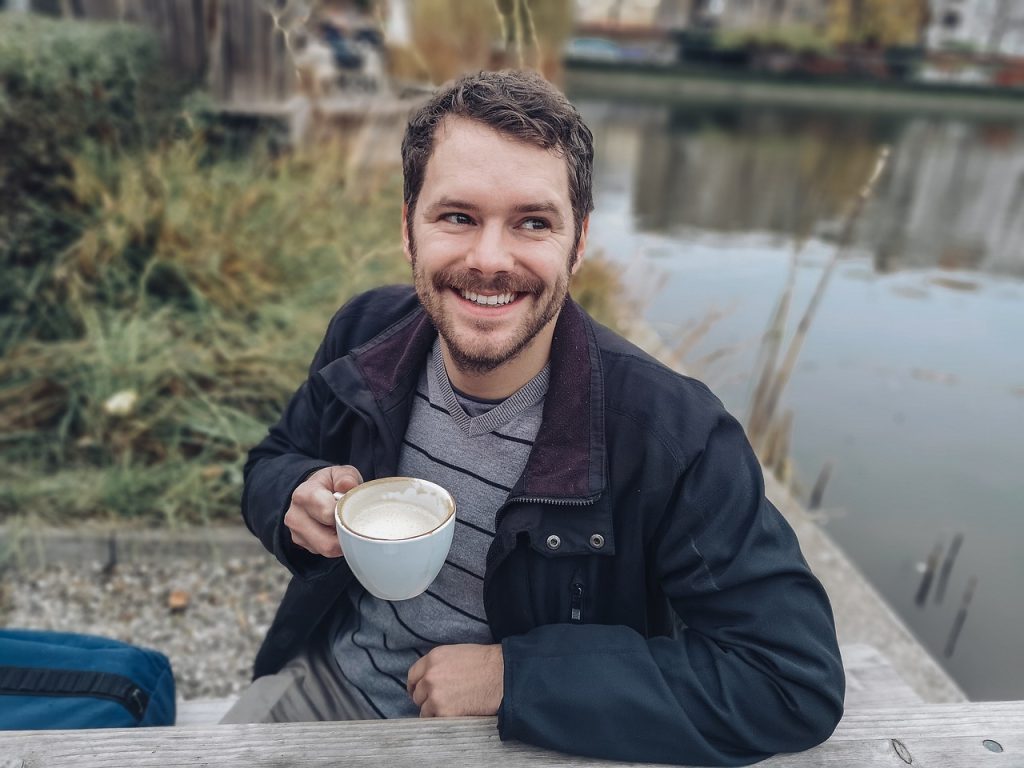The open road beckons, whispering tales of adventure and freedom. RV boondocking, with its promise of untamed landscapes and self-sufficiency, holds a particular allure for many travelers. Yet, beneath the romantic notion of off-grid living lies a crucial aspect: resource management, especially freshwater.
Unlike the familiar amenities of traditional campgrounds, boondocking requires a mindful approach to water usage. Gone are the days of endless showers and overflowing sinks; boondockers must become stewards of their resources, ensuring a sustainable and enjoyable adventure.
This guide serves as your roadmap to freshwater management in the world of RV boondocking. We will delve into the intricacies of understanding your needs, sourcing water, maximizing storage, and implementing water-saving techniques. We’ll also explore methods for maintaining water quality and navigating common challenges, equipping you with the knowledge and skills to navigate the wonders of boondocking without compromising on comfort or sustainability.
So, whether you’re a seasoned adventurer or a curious newcomer, prepare to embark on a journey towards responsible water management and unlock the full potential of your RV boondocking experience.
Image by TitusStaunton from Pixabay
Understanding Your Freshwater Needs
Estimating Daily Water Usage:
Before embarking on your boondocking adventure, accurately estimating your daily water usage is crucial. This ensures you bring enough water and plan your resupply stops accordingly. Here are some factors to consider:
Number of people: This is the most significant factor. A general rule of thumb is to allocate 2 gallons of water per person per day for basic hygiene and cooking. However, individual needs can vary based on age, activity level, and showering habits. Factor in additional water for children who may require more frequent bathing or infants who need formula preparation.
Duration of your trip: The longer your boondocking stay, the more water you’ll need. Plan your water usage based on the number of days you’ll be off-grid.
Activities: Certain activities demand more water than others. Consider how much water you’ll use for:
- Cooking: Simple meals require less water than elaborate dishes.
- Dishwashing: Opt for water-saving techniques like using a dishwashing pan and minimizing rinsing.
- Cleaning: Utilize cleaning cloths and sprays instead of running water whenever possible.
- Laundry: Hand washing clothes instead of using a washing machine saves significant water.
- Showering: Short showers with low-flow showerheads are essential for water conservation.
- Personal hygiene: Brushing teeth and shaving can be done efficiently with minimal water.
Factors Affecting Water Consumption:
Several factors can influence your actual water usage beyond the initial estimations:
Weather conditions: Hot weather typically leads to increased water usage for hydration and showering. Colder weather may require less water for hygiene but might necessitate using more water for hot showers or heating dishes.
Personal habits: Water-conscious individuals naturally use less water than those with less awareness. Implement water-saving practices like turning off the tap while brushing teeth or taking shorter showers.
Types of appliances: Low-flow faucets, showerheads, and washing machines significantly reduce water consumption compared to standard models. Consider investing in these water-saving appliances for your RV.
By carefully considering these factors and implementing water-saving strategies, you can accurately estimate your freshwater needs for a comfortable and sustainable boondocking experience.
Sourcing Freshwater While Boondocking
Tips for Locating Water Sources:
Finding reliable freshwater sources is key to a successful boondocking adventure. Researching ahead of time is crucial, as remote areas might not always offer readily accessible water. Here are some helpful tips:
- RV Parks and Campgrounds: These typically offer water fill stations for a fee. Consider joining RV memberships for discounted rates.
- Public Lands: National forests, state parks, and recreation areas often have designated water sources, sometimes free of charge. Check online maps and park websites for specific locations.
- Local Businesses: Restaurants, gas stations, and convenience stores might allow you to refill your water containers for a small fee, especially in rural areas.
- Private Land: With permission from landowners, you might be able to access wells or springs on their property. Always be respectful and inquire about water quality before filling up.
Water Treatment for Specific Sources:
Not all water sources are safe for consumption without treatment. Understanding the potential contaminants in different sources allows you to choose the appropriate treatment method.
- Rivers and Lakes: These sources can contain bacteria, parasites, and other contaminants. Boiling water for at least 1 minute is the simplest and most effective treatment method. Alternatively, consider using a portable water filter designed for backcountry use.
- Wells: Well water can be contaminated with bacteria, nitrates, or heavy metals. Testing your water source for specific contaminants is crucial before consumption. Depending on the results, you might need to use a filtration system, reverse osmosis, or other purification methods.
- Municipal Water Sources: Water from towns and cities is typically treated and safe to drink. However, carrying a water filter for additional peace of mind is always a good idea.
Safety Considerations in Water Refilling:
Always prioritize safety when sourcing water. Here are some essential precautions:
- Inspect the source for potential contaminants. Look for signs of pollution, such as algae blooms, animal waste, or industrial runoff.
- Use dedicated water containers. Avoid using containers that previously held chemicals or other substances.
- Clean and disinfect your water containers regularly.
- Follow proper water treatment procedures based on the source.
- Consider using a water quality testing kit to confirm the safety of your water.
Greywater Reuse:
Conserving freshwater is vital in boondocking. Greywater, the wastewater from sinks, showers, and washing machines, can be reused for non-potable purposes, such as:
- Flushing toilets. Many RV toilets can be flushed with greywater, reducing your reliance on freshwater for this function.
- Watering plants. Greywater is a natural fertilizer for your RV garden or potted plants.
- Washing your RV. Use greywater to wash the exterior of your RV, saving freshwater for cleaning dishes and other essential needs.
- Cleaning tools and equipment. Greywater is suitable for rinsing tools and equipment after outdoor activities.
Remember to check local regulations regarding greywater usage before implementing this practice. Be mindful of the potential for odors and use proper sanitation methods to prevent the spread of bacteria.
By understanding your water needs, researching available sources, and implementing safe water treatment and conservation strategies, you can ensure a sustainable and enjoyable boondocking experience.
Image by rawpixel
Innovative Freshwater Storage Solutions
Review of Storage Tanks and Containers:
Choosing the right storage solution for your freshwater needs is crucial for boondocking. Here are the key types and their pros and cons:
Built-in RV Tanks:
- Pros: Convenient, integrated into your RV, and often offer multiple tanks for fresh and greywater.
- Cons: Limited capacity, may not be easily accessible for cleaning or maintenance, and prone to freezing in cold weather.
Portable Containers:
- Pros: Offer flexibility and additional storage capacity, easy to clean and maintain, and can be winterized more readily.
- Cons: Take up valuable space inside or outside the RV, require additional handling for refilling and emptying, and may not be compatible with all RV water systems.
Collapsible Containers:
- Pros: Lightweight, compact when empty, ideal for maximizing space, and easy to transport and store.
- Cons: May not be as durable as rigid containers, susceptible to punctures, and may not be suitable for long-term storage.
Choosing the right solution depends on factors like:
- Your RV’s available space and weight capacity.
- Your desired water storage capacity.
- Your budget and personal preferences.
Maximizing Storage Space in an RV:
Limited space is often a challenge in RVs. Here are some strategies to maximize your freshwater storage:
- Utilize unused spaces: Look for hidden nooks or compartments under beds, seats, or dinettes where you can fit water containers.
- Invest in space-saving solutions: Consider multi-purpose furniture with built-in water storage or collapsible containers that can be tucked away when not in use.
- Organize your storage: Implement a system to keep your water containers and accessories neatly organized and easily accessible.
- Utilize external storage: If permitted by your RV model, consider mounting additional water tanks or containers on the exterior for extra storage.
Water Storage Considerations for Winter Boondocking:
Water freezes at 32°F, so winter boondocking requires special attention to your freshwater storage. Here are some tips:
- Insulate your water tanks and lines: This helps prevent freezing and ensures a consistent water supply.
- Use heated water hoses: These hoses prevent freezing during the filling process.
- Drain and winterize your water system: This involves removing all water from your tanks and lines to prevent damage from freezing.
- Consider using a portable heated water tank: This can provide a backup water source if your RV’s built-in system freezes.
By carefully planning your storage solutions and implementing these winterization techniques, you can ensure your freshwater supply stays safe and accessible throughout your boondocking adventures.
Image by Neale Bryan via flickr
Water Conservation Techniques
Practical Tips for Reducing Water Usage:
Simple changes in your daily habits can significantly reduce your water consumption while boondocking. Here are some practical tips:
In the kitchen:
- Wash dishes in a basin: Fill a basin with soapy water instead of using running water for washing and rinsing.
- Use disposable plates and utensils: This eliminates the need for dishwashing and saves water.
- Cook one-pot meals: This minimizes the number of dishes and utensils requiring cleaning.
- Defrost frozen food in the refrigerator: Avoid using running water to thaw food.
- Scrape food scraps into the trash instead of rinsing them down the drain.
In the bathroom:
- Take shorter showers: Every minute saved translates to water conservation.
- Turn off the faucet while brushing your teeth or shaving.
- Use a water-saving showerhead: This reduces water flow without impacting your showering experience.
- Install a low-flow faucet aerator: This reduces water flow for handwashing and other tasks.
- Consider using a composting toilet: This significantly reduces water usage compared to traditional toilets.
General practices:
- Fix leaky faucets and hoses promptly. Even a small leak can waste gallons of water.
- Turn off the water when not in use: This applies to brushing your teeth, shaving, washing dishes, etc.
- Use a water dispenser instead of running the tap for drinking water.
- Hang clothes to dry instead of using a washing machine.
- Collect rainwater for non-potable uses.
Water-Saving Devices and Gadgets:
Investing in water-saving devices can further reduce your water usage:
- Low-flow showerheads: These can reduce water flow by up to 50% without compromising shower pressure.
- Faucet aerators: These reduce water flow by mixing air into the water stream.
- Water-saving spray nozzles for hoses: These are perfect for washing dishes, rinsing vegetables, and cleaning your RV.
- Water flow timers: These help you monitor and manage your water usage, preventing overconsumption.
- Greywater recycling systems: These systems filter and treat greywater for reuse in flushing toilets or watering plants.
By adopting these practical tips and utilizing water-saving devices, you can make a significant impact on your water consumption while boondocking. Remember, every drop counts towards a sustainable and responsible RV experience.
Maintaining Water Quality
Ensuring the quality of your freshwater is paramount for your health and safety while boondocking. Implementing proper purification, filtration, and maintenance practices safeguards you from harmful contaminants and keeps your water systems functioning optimally.
Purification and Filtration Methods:
Depending on your water source and desired level of protection, various purification and filtration methods are available:
Boiling: This simple method destroys bacteria and parasites but does not remove other contaminants.
Chemical Treatment: Tablets or drops containing chlorine or iodine disinfect water for safe consumption.
Portable Filtration Systems: These systems utilize filters to remove sediment, bacteria, parasites, and even viruses from your water, offering superior protection.
Reverse Osmosis: This advanced technology removes virtually all contaminants, including dissolved minerals and chemicals, providing the highest level of water purity.
Choosing the right method depends on factors like:
- The quality of your water source.
- Your desired level of protection.
- Your budget and personal preferences.
Regular Maintenance of Water Systems:
Proper maintenance of your RV’s water systems is essential for preventing contamination and ensuring their longevity. Here are some key tasks:
- Clean and disinfect your freshwater tanks and lines regularly. This removes biofilm and sediment buildup that can harbor bacteria.
- Inspect and replace filters as recommended by the manufacturer.
- Check for leaks and repair them promptly.
- Flush your water heater periodically to remove sediment and prevent corrosion.
- Clean your water pump and strainer to ensure optimal performance.
Winterization of Water Systems:
Preparing your water systems for freezing temperatures is crucial to prevent damage from bursting pipes. Winterization involves:
- Draining all water from your tanks and lines.
- Pumping antifreeze through the system.
- Bypassing the water heater.
- Disconnecting and storing external hoses.
Following these maintenance and winterization procedures ensures your water systems function efficiently and provide you with safe, clean water throughout your boondocking adventures.
Image Credit: EZSnapDirect.com
Addressing Common Freshwater Management Challenges
Troubleshooting Common Issues:
Even with careful planning and preparation, freshwater management challenges can arise during your boondocking adventures. Here are some common issues and tips for troubleshooting them:
Leaks:
- Identify the source of the leak: Check for visible signs of water damage or listen for dripping sounds.
- Tighten loose connections: Use wrenches or screwdrivers to tighten any loose fittings or hose connections.
- Replace damaged components: If the leak persists, replace the faulty O-rings, seals, or hoses.
Pump Failures:
- Check for airlocks: Air trapped in the system can prevent the pump from functioning properly. Consult your RV manual for bleed procedures.
- Clean the pump filter: A clogged filter can restrict water flow and impede pump operation. Clean or replace the filter as needed.
- Check the fuse: A blown fuse can also cause pump failure. Replace the fuse with the correct amperage.
Freezing Pipes:
- Identify frozen areas: Look for visible frost or ice formation on pipes and lines.
- Apply heat: Use a hairdryer or warm compress to thaw frozen sections.
- Increase water flow: Once thawed, slowly open faucets to allow water to flow and prevent refreezing.
Winter Boondocking Challenges and Solutions:
Winter boondocking presents unique water management challenges. Here are some tips for overcoming them:
- Invest in additional insulation: Wrap exposed pipes and tanks with insulation materials to prevent freezing.
- Use heated water hoses and cables: These prevent water from freezing in the hose and connection points.
- Skirt your RV: This helps maintain warmer temperatures underneath the RV, protecting your water systems from freezing.
- Monitor water levels closely: Regularly check your water tanks to ensure they do not run low and freeze.
- Consider alternative water sources: If your built-in systems freeze, utilize portable water containers stored inside the RV where they are less susceptible to freezing.
Image by melancholiaphotography from Pixabay
Case Studies: Real-Life Experiences and Insights
Learning from the experiences of seasoned boondockers can offer invaluable insights and practical solutions to freshwater management challenges. Here are some real-life examples from the Good Sam community showcasing successful water conservation strategies, overcoming freshwater management challenges, and unique water sourcing methods:
Successful Water Conservation Strategies:
- Minimizing shaving water: One boondocker shares how they use a large plastic cup for hot water instead of filling the entire sink, significantly reducing water usage for shaving.
- Reusing dishes: Another individual mentions using shallow trays for dishwashing and reusing slightly dirty dishes for subsequent meals, especially when water levels are low.
- Dishwashing tip: A boondocker suggests using a spray bottle filled with soapy water instead of running water when washing dishes, further reducing water waste.
- Utilizing graywater: An experienced boondocker installs a graywater system that filters and reuses graywater for toilet flushing and plant watering, minimizing freshwater consumption.
Overcoming Freshwater Management Challenges:
- Maximizing water usage: A clever boondocker suggests knowing the location of the water pick-up tube in their freshwater tank. Tilting the RV slightly towards the side where the tube is located allows for maximum water utilization before needing a refill.
- Energy conservation and water usage: Another boondocker highlights the connection between energy and water conservation. By using LED lights and minimizing high-energy appliances, they indirectly reduce water usage by lowering overall energy consumption.
- Winterizing water systems: A seasoned winter boondocker recommends using a heated water hose and cable to prevent freezing during cold weather and ensure water availability.
- Troubleshooting pump failures: One boondocker shares their experience with resolving pump failures by checking for airlocks in the system and following proper bleed procedures as outlined in the RV manual.
Unique Water Sourcing Methods:
- Repurposing boiled water: One creative boondocker uses water from boiling pasta or potatoes to pre-rinse dishes, effectively reusing water that would otherwise be discarded.
- Extended water supply for showers: Another boondocker sets up an additional 34-gallon water tank under their trailer, connected to an external water pump. This provides them with an extended water supply for showers, offering a camp-style solution to off-grid showering needs.
- Collecting rainwater: A resourceful boondocker utilizes a tarp and container to collect rainwater, supplementing their freshwater supply and reducing reliance on other sources.
These case studies not only provide valuable inspiration but also offer practical advice for boondockers at all levels to effectively manage freshwater and enjoy their off-grid adventures. The shared experiences emphasize the importance of innovative thinking and adaptability in the face of limited resources, demonstrating how small changes in daily habits can lead to significant water conservation and a more sustainable and enjoyable boondocking experience.
Conclusion
This comprehensive guide has delved into the intricacies of freshwater management for RV boondockers. From understanding your needs and sourcing water to implementing innovative storage solutions and practicing water conservation techniques, we’ve equipped you with the knowledge and skills necessary to navigate the challenges and enjoy the rewards of off-grid living.
Remember, responsible water management is not just about securing your own comfort; it’s about preserving the natural resources we cherish for future generations. By embracing sustainable practices and following the guidance presented in this guide, you can contribute to a responsible boondocking community and ensure the timeless pleasures of off-grid adventure remain accessible for years to come.
So, embark on your next boondocking adventure with confidence, knowing you are equipped to manage your freshwater resources efficiently and enjoy a sustainable and unforgettable journey.
Resources for further information:
Websites:
- Heartland RVs – Boondocking 101: Water and Waste Management: This Heartland RVs page provides practical tips for water conservation and management during boondocking, including where to refill water and how to efficiently use water resources.
- RV With Tito – How To Refill Fresh Water Tank While Boondocking: On this RV With Tito page, you’ll find detailed advice on freshwater management, including the use of collapsible water containers and tips for finding water while boondocking. It also discusses water transfer methods and equipment.
- Boondock or Bust – Water Management and Conservation Techniques for RV Boondocking: This Boondock or Bust guide covers various aspects of water management in RV boondocking, including storage capacity, filtration systems, and minimizing environmental impact. It also links to resources like the EPA’s WaterSense program and other informative RV blogs.
- U.S. Environmental Protection Agency (EPA) – WaterSense: The U.S. Environmental Protection Agency’s WaterSense program offers information and tips on water conservation for various purposes, including RV use. It’s a valuable resource for understanding the environmental impact of water usage and finding strategies to minimize it.
Online Forums:
-
- RV Forum: https://www.irv2.com/forums/
- RV Travel: https://www.rvtravel.com/
Recommended water treatment products:
- Portable water filter: Sawyer Mini Water Filtration System https://www.sawyer.com/products/mini-water-filtration-system
- Water purification tablets: Potable Aqua Water Purification Tablets https://1staidsupplies.com/product/disaster-kits-survival-supplies/emergency-food-emergency-water/potable-aqua-water-purification-tablets/
- Water quality testing kit: Varify 17 in 1 Drinking Water Test Kit https://www.amazon.com/Premium-Drinking-Water-Test-Kit/dp/B0837Z5PBJ
- Water softener: Aquaboon RV Water Softener https://proaquawater.com/products/pro-aqua-portable-water-softener-regeneration-pre-filter-kit-bundle
Water-saving gadgets and accessories:
- Low-flow showerhead: Waterpik PowerPulse Showerhead https://showers.waterpik.com/
- Faucet aerators: Neoperl Faucet Aerators https://www.neoperl.com/global/en/home/
- Water flow meter: Waterpebble https://www.amazon.com/Conserve-Measure-Gallons-Standard-Watering/dp/B0BGCQ5Y5K
- DIY Greywater recycling system: USI-RV: https://www.doityourselfrv.com/dry-camp-longer-diy-gray-water-recycling-system-usi-rv

